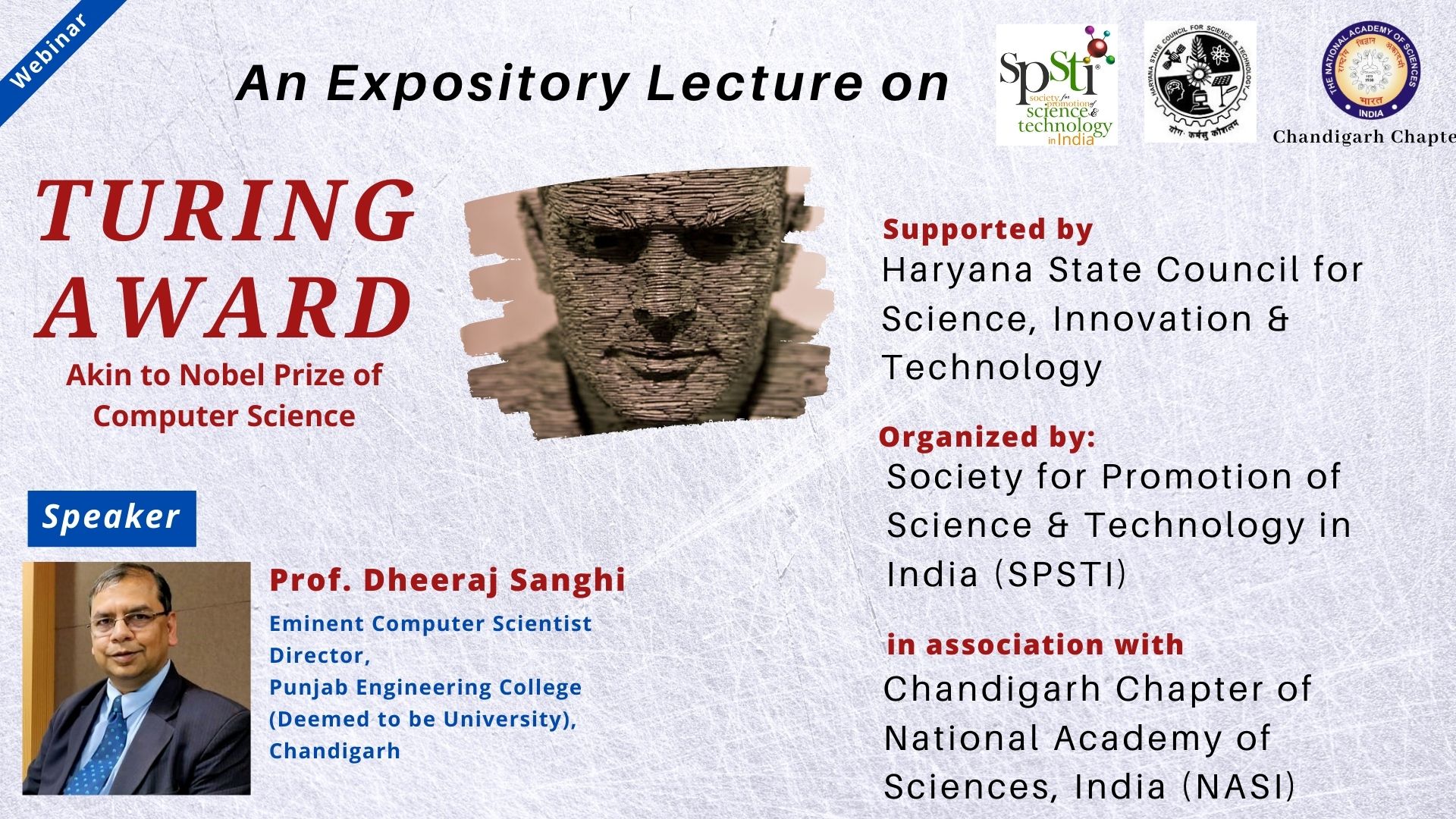The Society for Promotion of Science & Technology in India (SPSTI) in association with Chandigarh Chapter of National Academy of Sciences, India (NASI) with support from Haryana State Council for Science, Innovation & Technology organised an Expository Lecture on Turing award, akin to Nobel Prize of Computer Science, on friday, March 12, 2021 at 11:00 AM through online platform. The lecture was attended by students, teachers and members of the general public. The lecture was live from Zoom platform with more than 22 attendees and many viewed on the Facebook page of SPSTI from various places all over the country.
The ACM A. M. Turing Award is an annual prize given by the Association for Computing Machinery (ACM) for contributions “of lasting and major technical importance to the computer field”. The award is named after Alan Turing, who was a British mathematician and reader in mathematics at the University of Manchester. Turing is often credited as being the key founder of theoretical computer science and artificial intelligence. Dr. Raj Reddy, an Indian-American Computer Scientist, received the Turing Award in 1994 for pioneering the design and construction of large scale artificial intelligence systems, demonstrating the practical importance and potential commercial impact of artificial intelligence technology.
The webinar was steered by Prof. Keya Dharmvir, General Secretary, SPSTI. Prof. Arun K. Grover, Former Vice Chancellor of Panjab University and Vice President of SPSTI introduced and presented opening remarks about this lecture on Turing Prize as the eighth expository lecture in the Nobel Prize series. This was the first lecture organised on Turing awards. Prof. Anantha Ramakrishna introduced the the speaker, Prof. Dheeraj Sanghi. Dr. Sanghi is an Eminent Computer Scientist and Director, Punjab Engineering College (Deemed to be University), Chandigarh.
Prof. Sanghi gave a detailed account of Alan Turing, who is credited as being the key founder of theoretical computer science and artificial intelligence. During the second world war he was responsible for breaking naval code and his efforts are regarded as crucial one. As a mathematician, he developed the Turing machine, which is a mathematical tape of computation that defines an abstract machine that manipulates symbols on a strip of tape according to a table of rules. It was a simple model of computation which he invented in 1936, even before his PhD. it provides the answer to fundamental questions about decidability and limits of computation. In 1950, though other scientists were also working on artificial intelligence, he was the first one to clearly define artificial intelligence as a response to a human’s question in written or spoken form which he is not able to identify as human or machine response. This was inspired by the ‘imitation game’. Inspite of the incredible word he did he was stripped of his security clearance as he was prosecuted for homosexulaity in1952. In 2013, he was granted pardon posthumously.
Further Prof. Sanghi discussed the scientists and their work who received the award since its inception in 1966. The first turing award was given to Alan Perlis for computer programming techniques and compiler construction that he called as ‘internal translators’. Maurice Wilkes won the award in 1967 and was the first non US who was awarded for inventing microprogramming. Frances Ellen was the first woman to receive the Turing price for optimising compilers and parallelization. He explained the work of Diffie and Hellman in detail who received the award in 2015 for their work in cryptography. Their work ‘New direction in cryptography’ showed how two entities can share a secret if all their communication is public, the Diffie Hellman protocol.
In 2016, Lee received the award for inventing world wide web and the 2017 award was given to Hennessy and Patterson for their research in RISC (reduced instruction set computer) architecture for high speed memory and instruction pipeline. The 2019 award was given to Catmull and Hanrahan for their contribution in graphics using texture mapping and minimizing the distortion of images when high resolution pictures are compressed to small resolution images. The session concluded with questions from participants and it was much appreciated by attendees. Shri Dharam Vir, IAS (Retd.) & President SPSTI, presented concluding remarks and vote of thanks to the speaker and audience.

